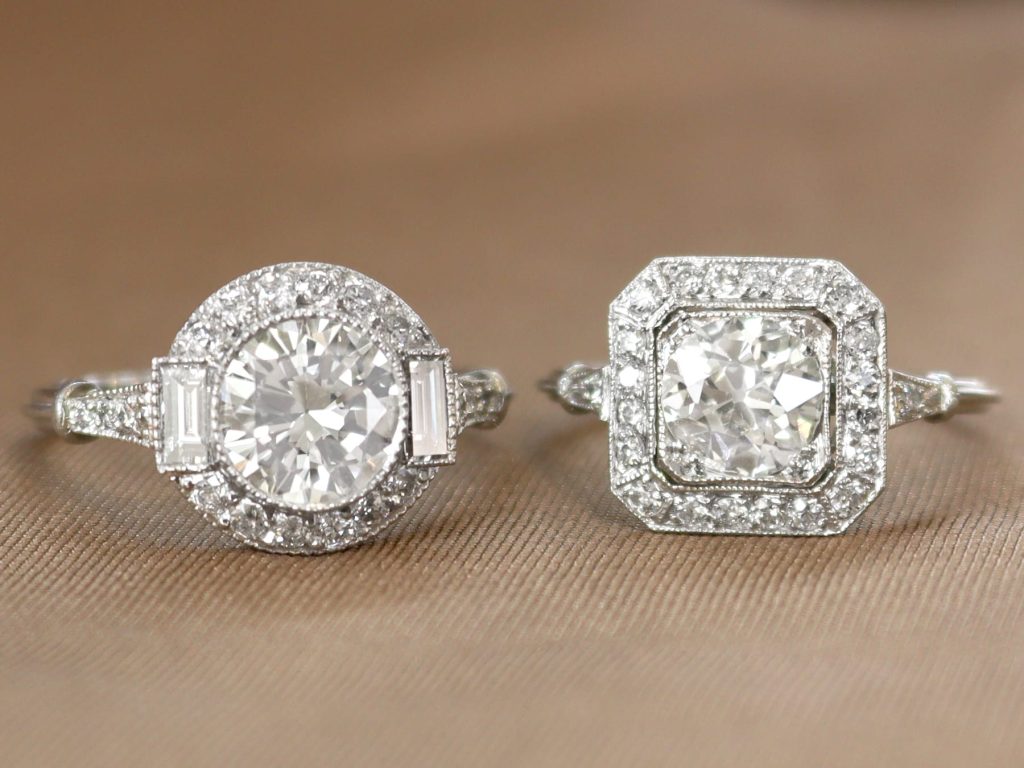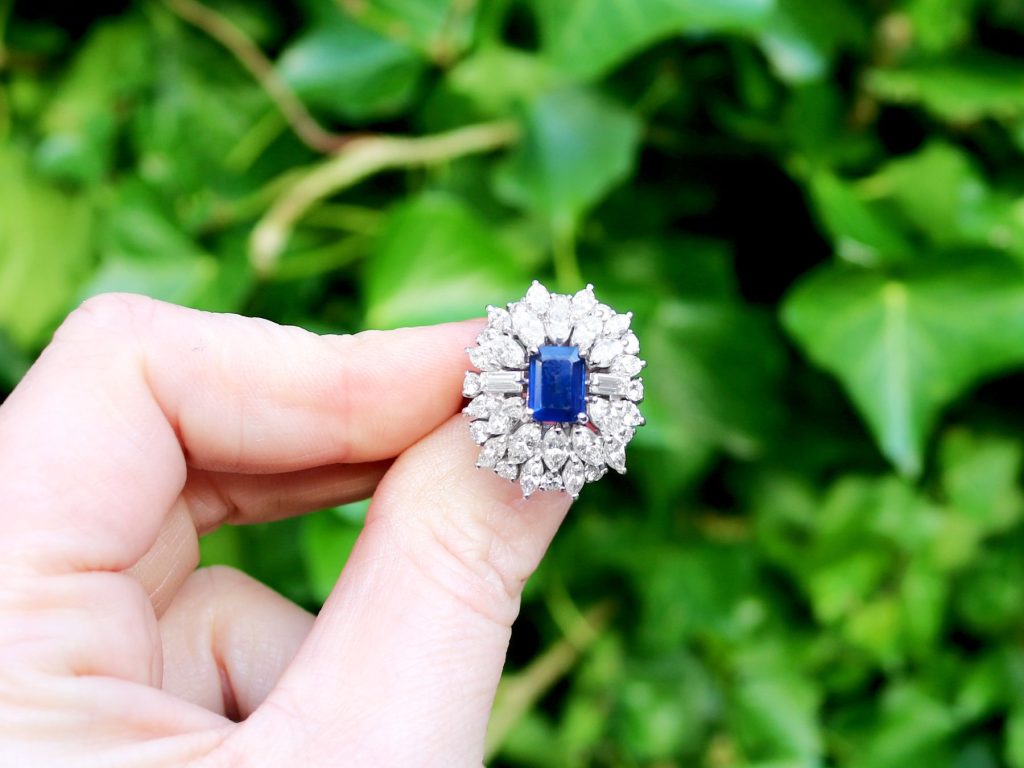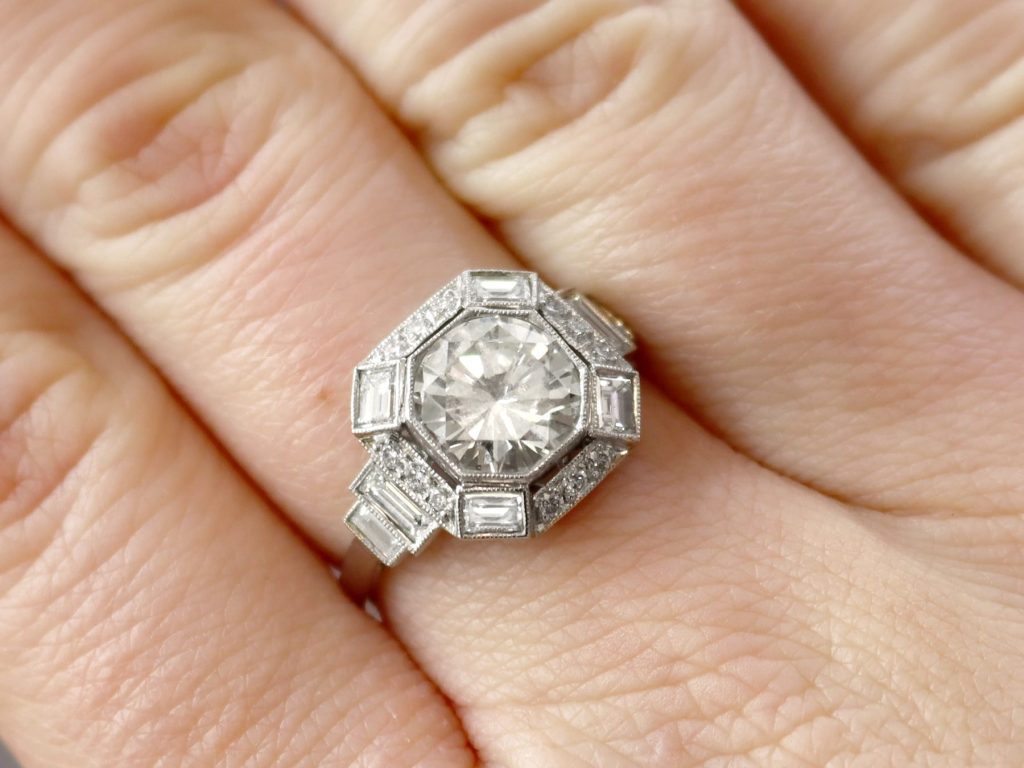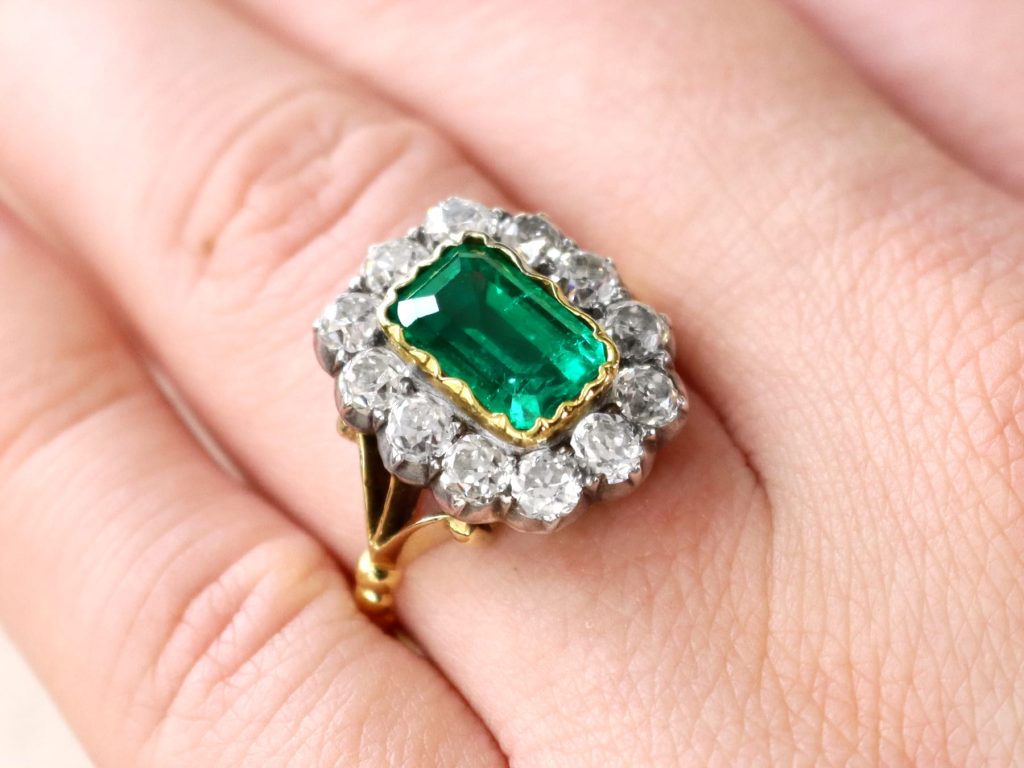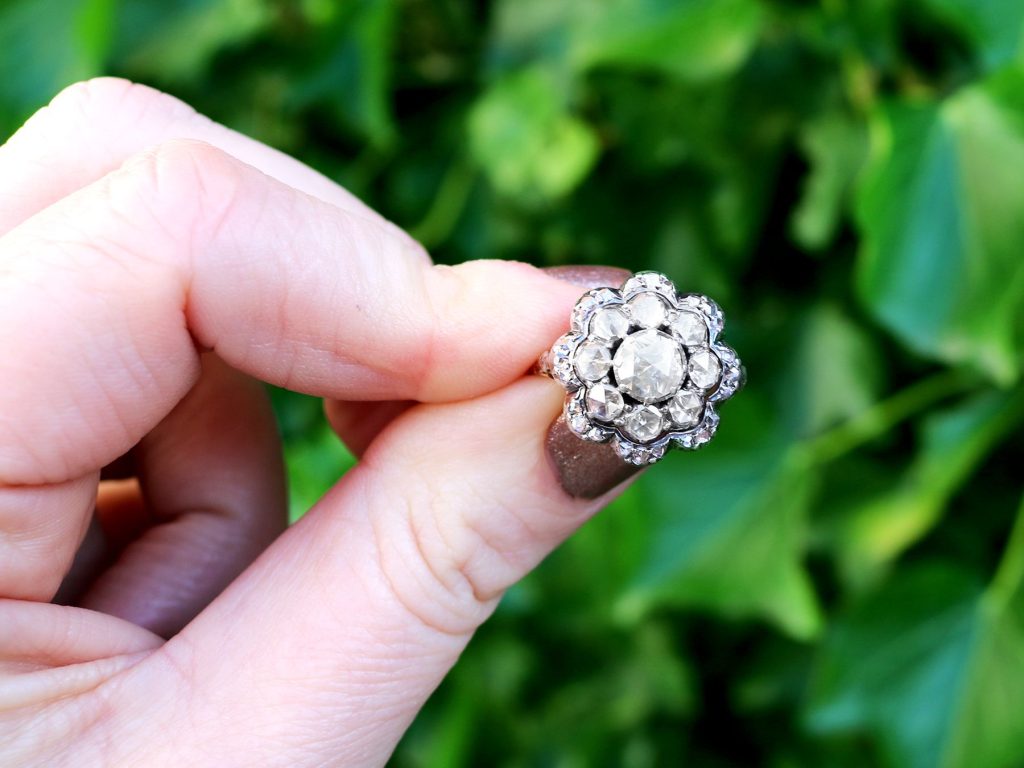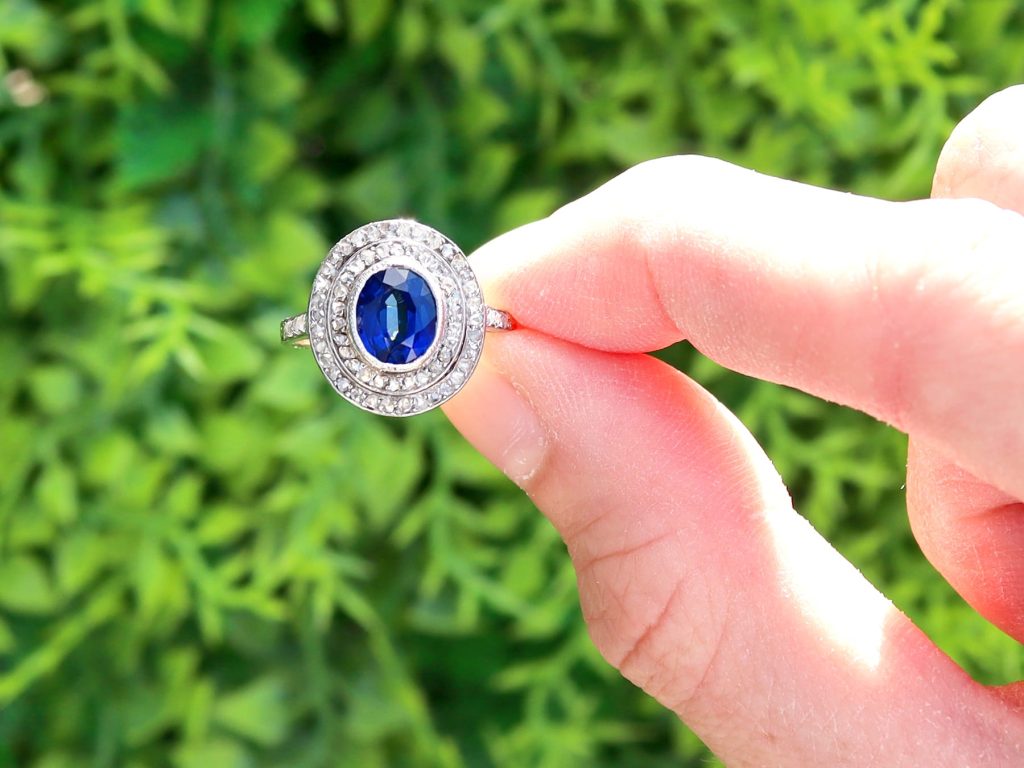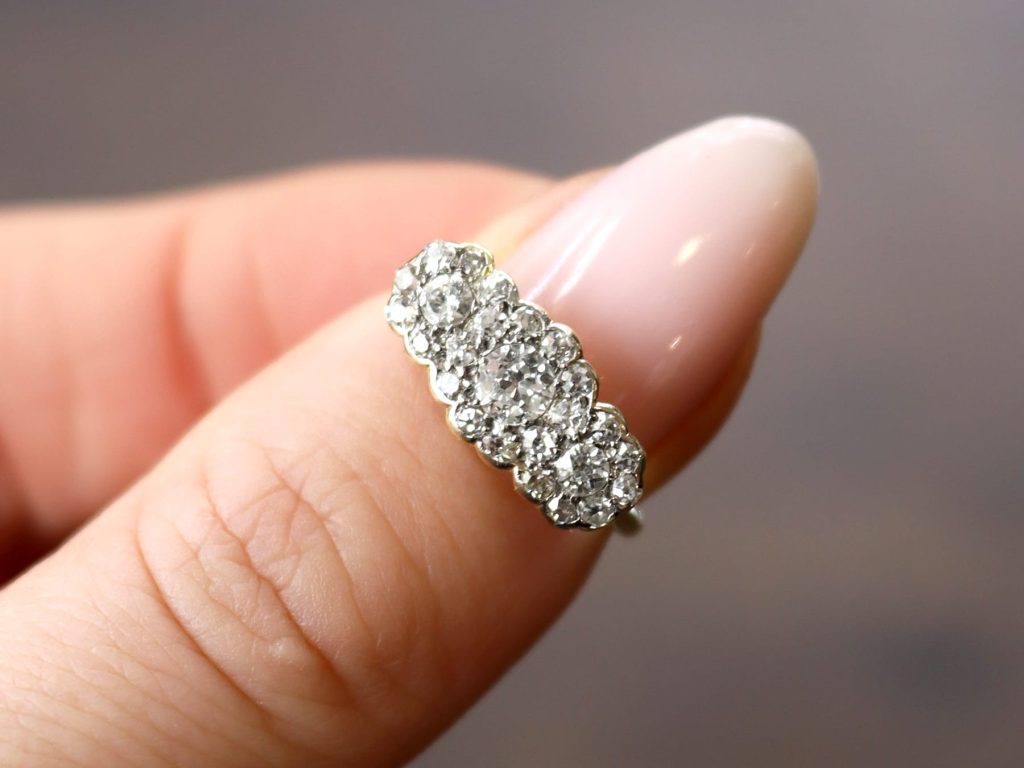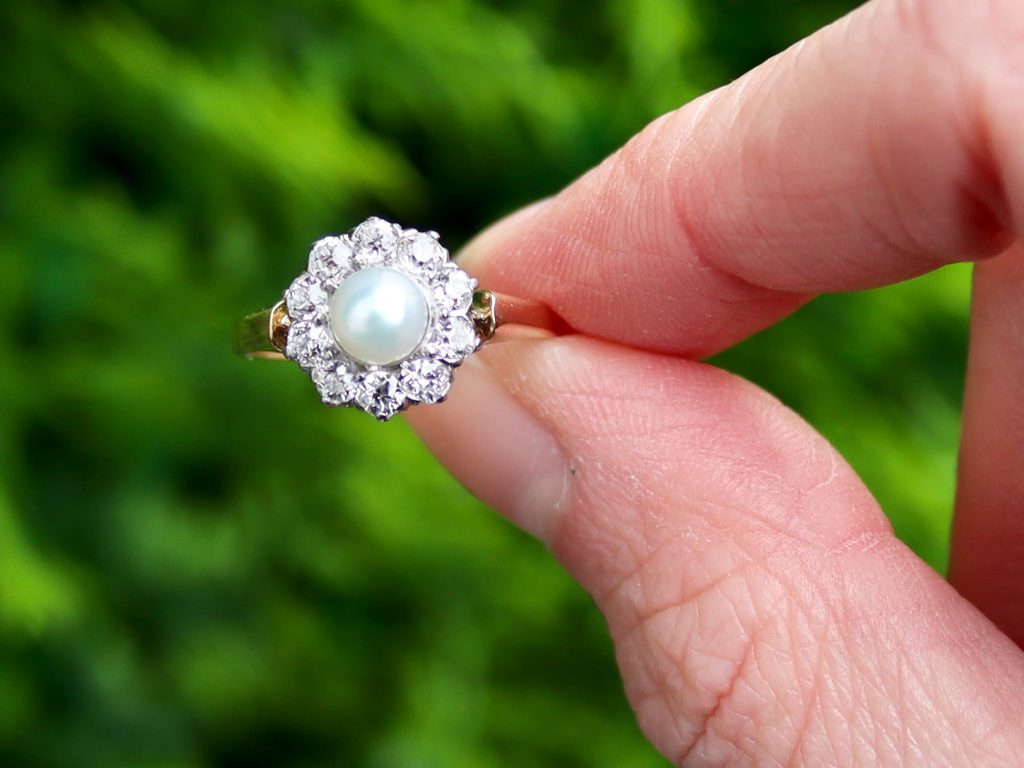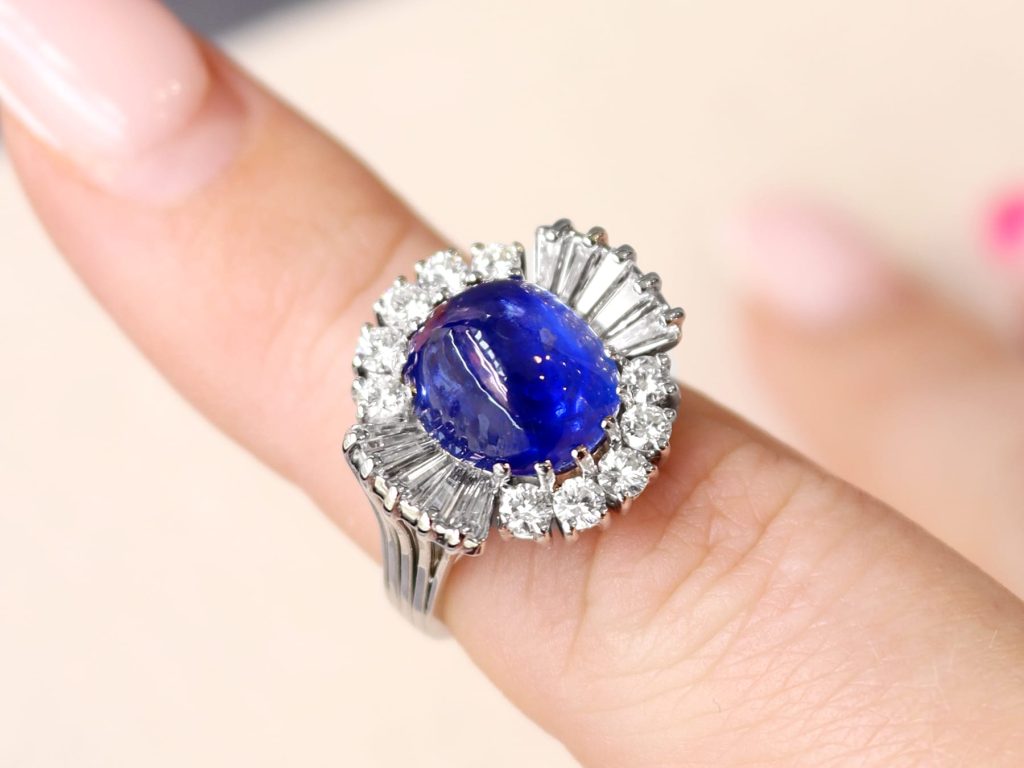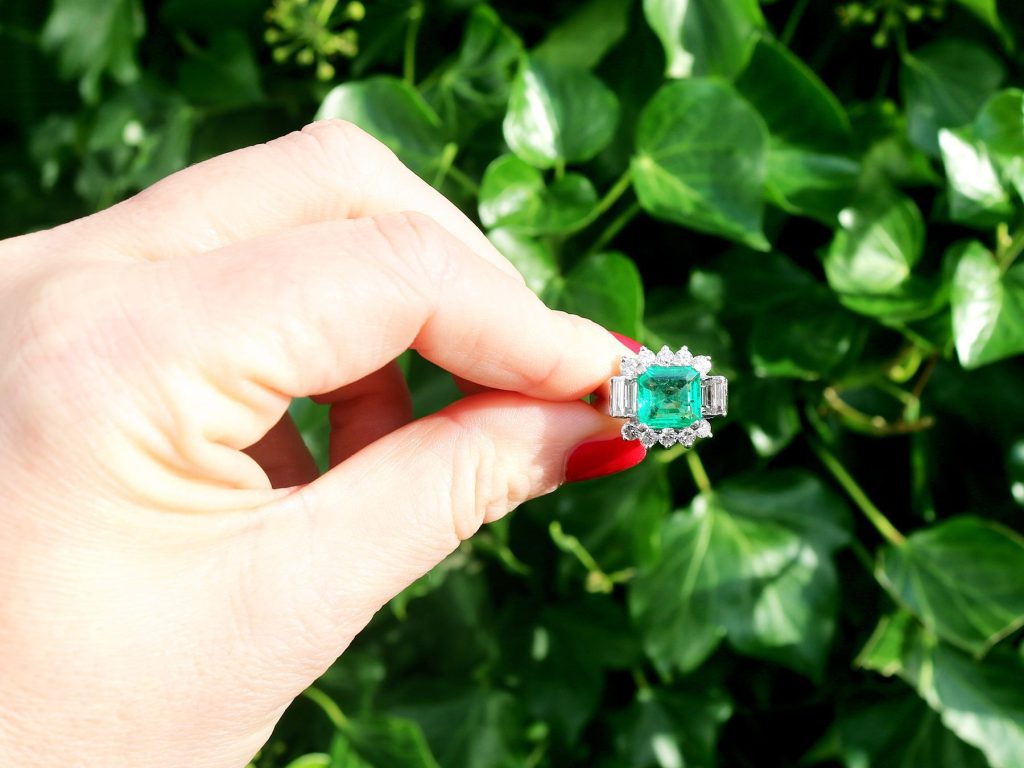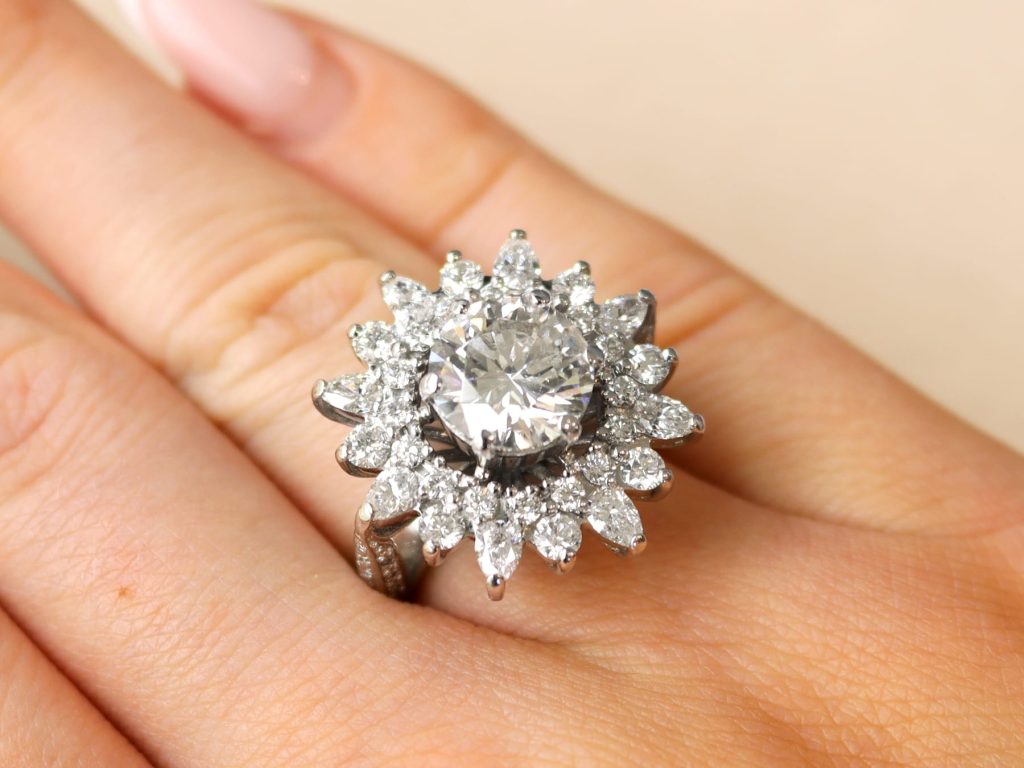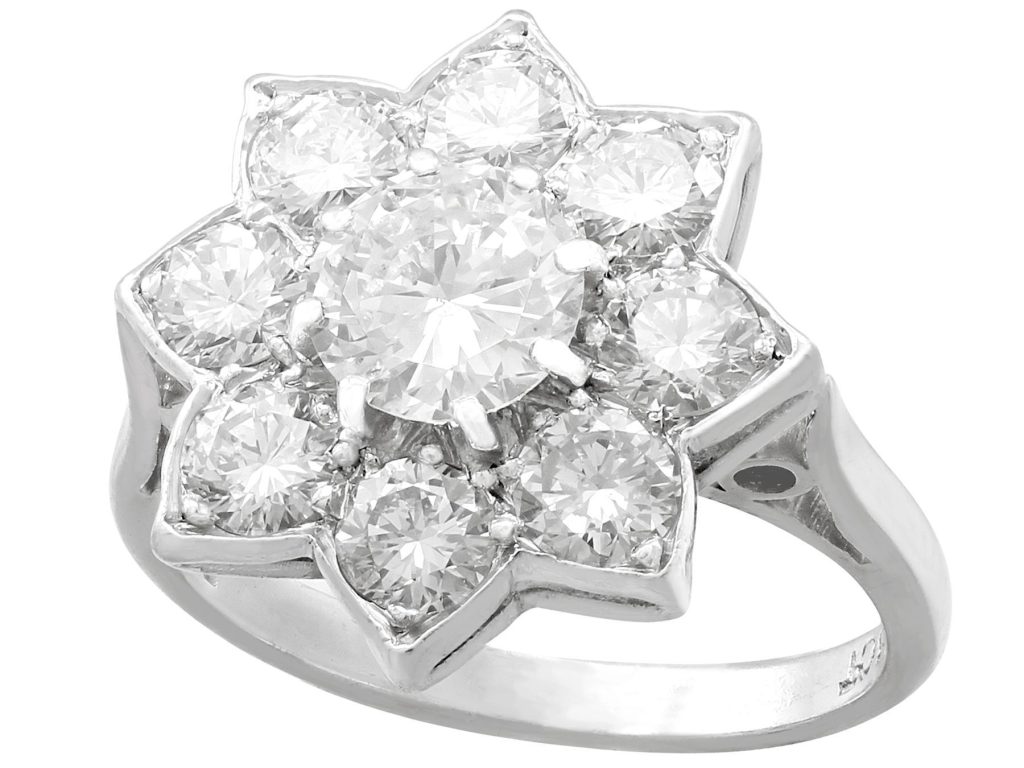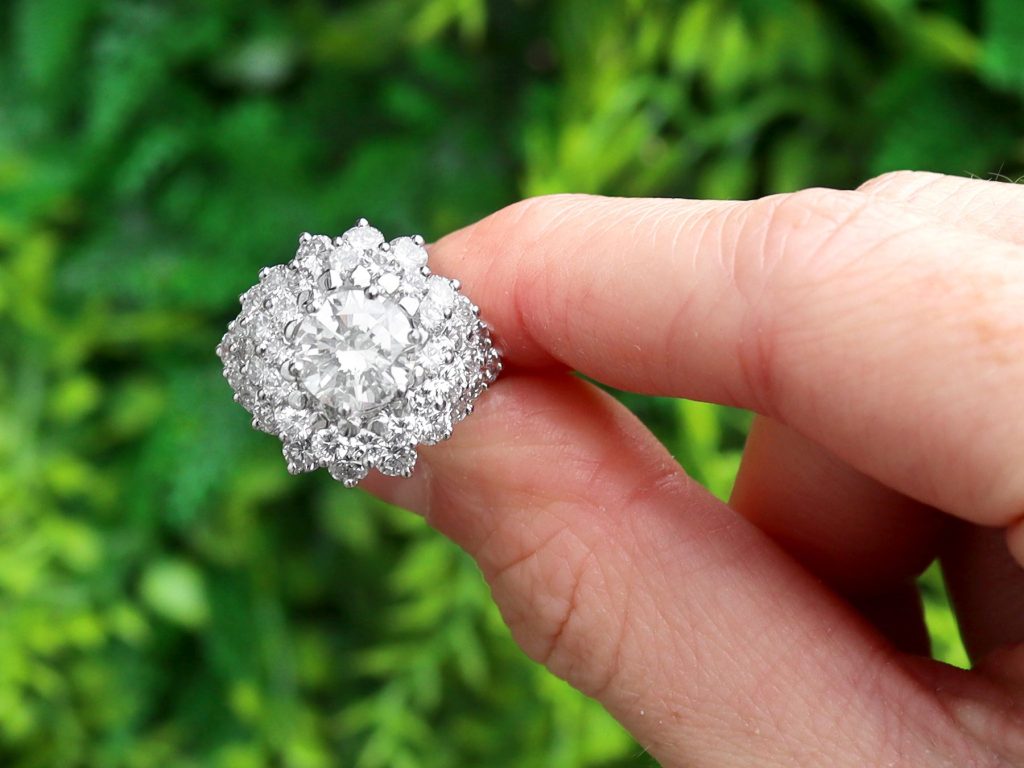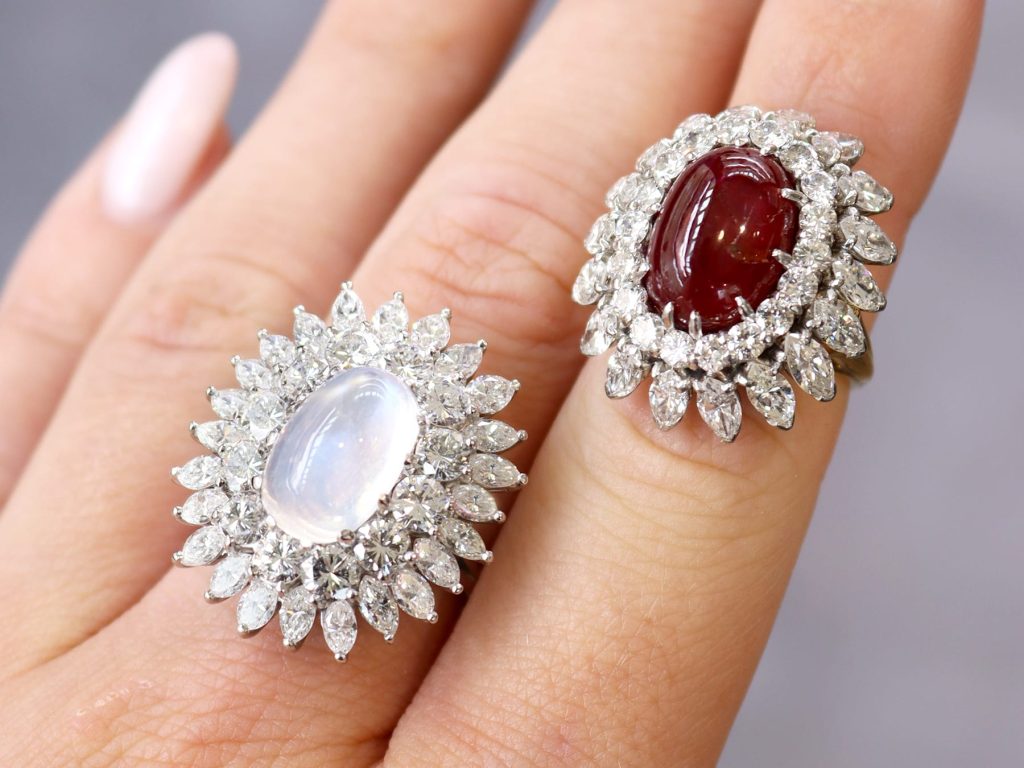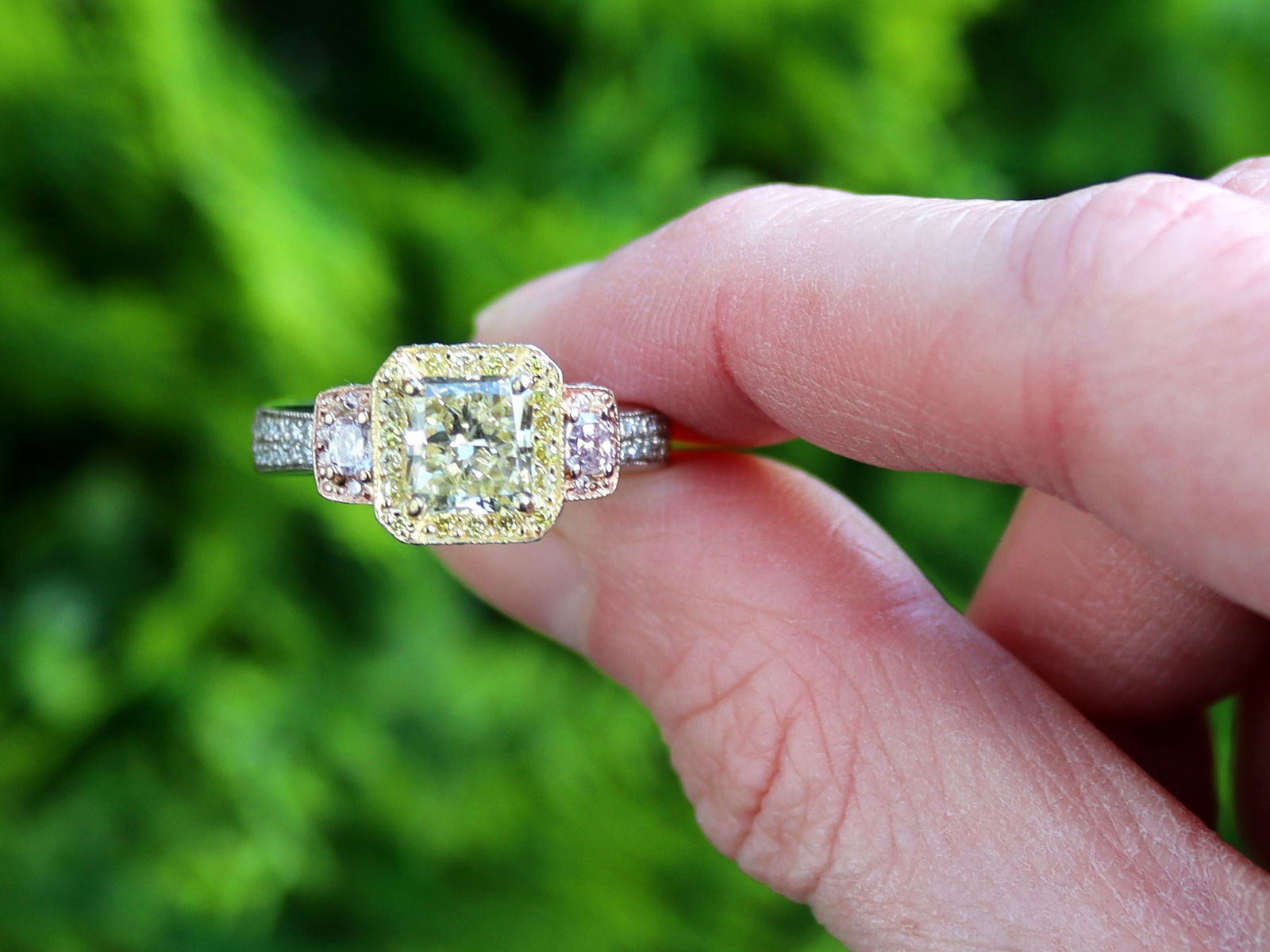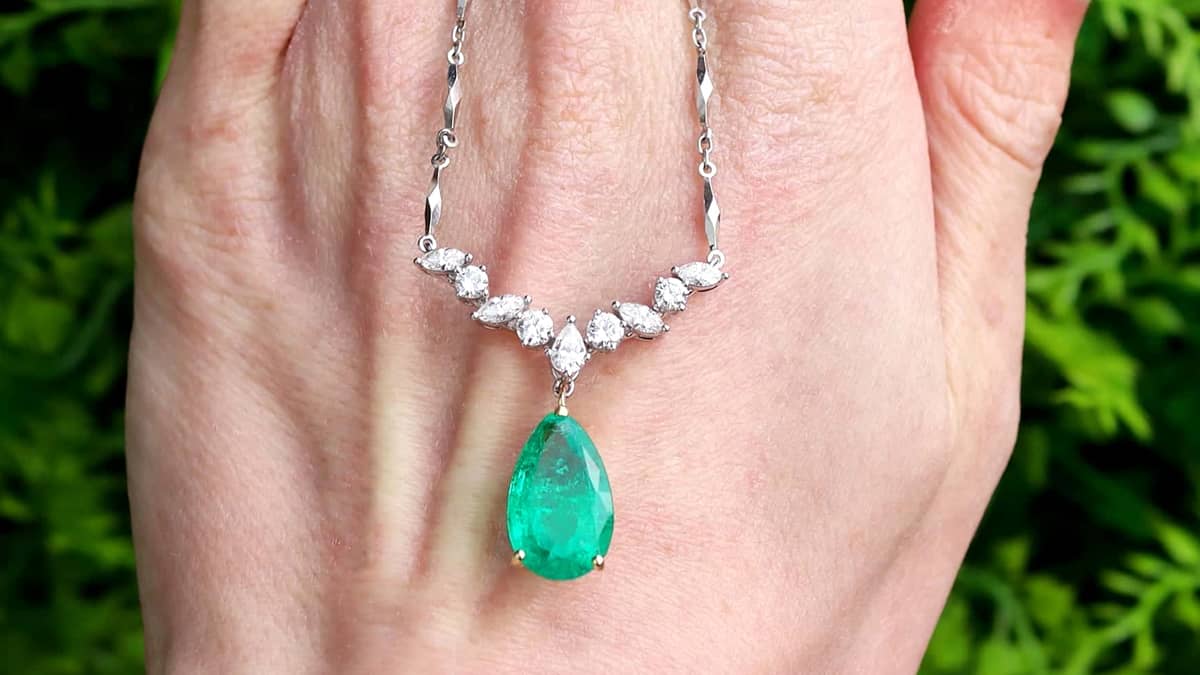A bold and beautiful engagement ring design, the cluster engagement ring is where there are multiple diamonds or other gemstones set close together to create a larger and more sparkling overall appearance. It has remained a timeless choice across eras with its eye-catching design. It can be more affordable than the classic solitaire engagement ring yet still manages to appear bigger and brighter.
Here we are delving into the evolution of this style and looking at how each period influenced the design.
What is a Cluster Engagement Ring?
As mentioned, a cluster ring features multiple diamonds or gemstones set close together or may feature a central stone encircled by multiple smaller stones, similar to a halo engagement ring. This is to enhance the stones brilliance and its size. This is such a favoured choice due to its maximalist aesthetic, achieving more sparkle and appearing to be larger often for a lower cost.
Georgian Era (1714-1837): The Birth of Cluster Rings
Key Characteristics:
The early designs of cluster rings often featured intricate and elaborate details including carved shoulders and shanks. Usually, they included the central gemstone encircled by smaller stones. The bands at this time were often yellow or rose gold but the stones were set in silver. The rose cut is known for its rounded edges and triangular facets and was a particularly popular choice in cluster rings of this era.
Notable Styles & Influences:
Nature inspired motifs were common in Georgian rings and the designs were also impacted by the extravagant trends of the Baroque and Rococo movements. Usually, the stones were set in closed-back-settings and foiling was used to enhance the gemstone. Foiling applied a metallic coating to the stones back which provided extra shimmer in the light. Frequently used gemstones included diamonds (especially for evenings) and natural pearls, garnets and agates for daytime wear.
Why They Were/Are Popular:
Britain’s wealth and influence had blossomed and grand occasions called for stunning jewellery such as cluster rings. It also was a high point in jewellery craftsmanship further emphasising the detail and luxury of pieces from this era.
Victorian Era (1837-1901): Sentimental & Romantic Designs
Key Characteristics:
Queen Victoria’s reign saw jewellery become reflective of love and nature with floral cluster designs. Some Victorian jewellery motifs included ribbons, leaves, hearts and lace-type filigrees. Mostly Victorian engagement rings were yellow or rose gold with platinum becoming popular toward the turn of the century. The cluster and halo settings became very popular with either a colourful gemstone surrounded by a diamond halo or a diamond being encircled by colourful gemstones.
Notable Styles & Influences:
Early Victorian (1837-1860): Also known as the Romantic period, it focused more on the delicate and romantic symbolism, like hearts, as well as nature inspired motifs such as flowers, leaves and serpents. Popular gemstones included garnet, amethyst and turquoise, often set in yellow gold.
Mid Victorian (1860-1880): The jewellery designs were more sombre due to Prince Albert’s death and therefore darker stones such as onyx and jet were used as well as black enamel. However, after the discovery of diamond mines in South Africa, diamonds grew in popularity and were frequently used in cluster and halo designs.
Late Victorian (1880-1901): This saw a return to more extravagant and whimsical designs with a mixture of gemstones and more use of platinum which was sturdy and held intricate designs.
Why They Were/Are Popular:
This era provided a range of elaborate designs and multiple motifs, with many gemstones included as well as the classic diamond. Intricate metal work created a luxurious and ornate final look to the rings. There were advances in gemstone cutting techniques which led to the old European cut’s creation. Cluster and halo rings became a staple and a recognisable design from this era.
Edwardian Era (1901-1910): Delicate & Lacy Elegance
Key Characteristics:
This period moved away from elaborate designs to more delicate and refined ones. Edwardian engagement rings featured more intricate details thanks to the increased use of platinum. Filigree work involved ornate designs resembling lace and millegrain created a fine beaded edge providing a subtle texture and a refined antique look.
Notable Styles & Influences:
Often the designs in Edwardian jewellery were floral and therefore the rings oozed elegance and femininity. Other motifs included bows, garlands, scrolls and hearts. Platinum enhanced the diamonds colour in diamond rings and due to its strength less metal was needed to create the ring, allowing for a more dainty and elegant finish. The era was influenced by the Art Nouveau and Belle Époque movements which emphasised natural motifs and a sense of fluidity.
Why They Were/Are Popular:
The use of platinum made rings stronger and allowed for lighter and more dainty rings to be made which featured ornate filigree and millegrain detail. The romantic details and motifs used in the era reinforce the significance of engagement rings.
Art Deco Era (1920s-1930s): Bold & Geometric Designs
Key Characteristics:
The Art Deco rings are characterised by their bold and geometric designs which meant cluster rings were more structured and often used shapes such as hexagons, octagons, rectangles or squares. Bright gemstones, such as rubies, emeralds and sapphires, were included alongside diamonds providing a dramatic contrast.
Notable Styles & Influences:
The Roaring twenties and the jazz age were a notable influence with statement pieces of jewellery being prolific. Platinum was still very popular being used to created striking linear settings. The discovery of King Tutankhamun’s tomb in 1922 influenced jewellers with more precision in metal work and jewel cutting, which allowed for makers to arrange stones in more unique ways.
Why They Were/Are Popular:
The large and striking appearance of Art Deco engagement rings makes them a standout choice with their very distinctive angular designs being easily recognisable. The uniqueness of their design makes them an interesting alternative to the classic diamond solitaire ring. Also, the frequent use of colourful gemstones appeals to many wanting to add some vibrancy to their engagement ring.
How Cluster Rings Evolved Beyond Art Deco
Cluster rings have remained a popular choice for those seeking a glamourous style, stunning craftsmanship and a unique design. Most vintage examples feature a large stone surrounded by the smaller stones and often resemble a halo, flower or starburst. Modern clusters may take on a range of shapes and mix colourful gemstones with diamonds in their designs. Now cluster rings can combine the stunning antique designs from the aforementioned eras with modern craftsmanship.
Choosing the Perfect Antique Cluster Engagement Ring
When it comes to choosing which cluster engagement ring is best for you, try and consider the design elements you like and what era best reflects your style preferences. For instance, if you love romantic motifs, you may be drawn to Victorian rings or in contrast you may prefer something more delicate and lighter, therefore you could look to Edwardian rings or if you want something bolder and more geometric, you’ll want to check out the Art Deco style.
Another thing to consider is what gemstones you’d like to include. Do you want a full-on diamond fest with a diamond cluster ring or would you like to combine multiple gemstones to create a contrast? You may simply pick your favourite stones you are most drawn to or you could pick something which is symbolic to you such as your birthstone, an anniversary stone or a stone you like the symbolism of, for example rubies signify passion.
Ensure you purchase from a reputable retailer when purchasing your cluster engagement ring to ensure the quality of the item. Check their reviews, read up on the item and its stones’ quality and observe the items images and certificates provided.
Where to Buy Authentic Antique Cluster Engagement Rings
At AC Silver we have a large selection of cluster engagement rings, spanning centuries and featuring a range of designs crafted in various metals and precious gemstones. Our broad collection showcases many impressive examples of this popular ring design, each with its own unique style and history. If you have any queries about a specific era or an item itself, you can contact us via email for more information.
In conclusion, each era has put its own stamp on the iconic cluster engagement ring, all unique and beautiful deigns in their own right. It is no wonder this design has remained such a popular choice due to its versatility, enhanced sparkle and size, and eye-catching appearance. You can shop all our cluster engagement rings on our site now.

